STUTTGART, Germany – A wide gray gate slowly swings open to a downhill driveway that leads into what looks like a small factory. There’s no sign to identify the occupant company, and despite tall windows spanning the building’s first and second floor, the lower two-thirds of those on the bottom are glazed white to prevent peering eyes. There are similarly nondescript buildings on either side and a Mitsubishi dealer across the street. There’s no way in hell you’d drive by and think anything of it.
But then one day you’re lucky enough to see what’s at the bottom of that driveway beyond a large garage door and, well, take it away photo gallery.
This is basically where Porsche keeps all its greatest hits, rarest treasures and noteworthy four-wheeled pieces of history. Everything is special for one reason or another: rare special editions, unique configurations, winning race cars, examples of significant advances, concept cars, test mules and even cars built by different companies that Porsche had a hand in developing. While many find their way into Porsche’s grand, open-to-the-public museum in nearby Zuffenhausen, there’s no way it could all fit there.
This is now the second time I’ve been lucky enough to visit, with a genuine emphasis on lucky. Last time, I took the photos in the above gallery. This time, I’d be doing a lot more than that: I’d be driving several of those noteworthy four-wheeled pieces of history. Now, I wasn’t so lucky as to have my pick of the litter, but instead, Porsche’s team responsible for the 718 Spyder RS press launch put together a tasting menu, so to speak, of past Porsches that were similarly firsts of their kind or special, highly-focused performance models.
Throughout this week, I’ll be sharing what it was like to drive each of them. Admittedly, I don’t have a great deal of experience driving pre-1990 cars, and one of this selection would indeed become the oldest car I’ve ever driven. This is about sharing this lucky experience and some of what I learned along the way.
Car No. 1
1981 Porsche 928 S 50-Year Anniversary Edition
If, like me, you have a hard time keeping track of Porsche’s endless three-number model names and internal reference codes, the 928 was the first front-engined model Porsche engineered (though it was beaten to market by the entry-level 924). It was originally intended to be the 911’s replacement, as sales of Porsche’s sports car were trending downward in the 1970s and switching to a more traditional, front-engined, V8-powered, GT-style car seemed like a more palatable choice for luxury customers than the oddball 911. Obviously, this thinking changed and both cars would be sold side-by-side along with subsequent front-engined models.
This particular 928 is a museum piece because it was one of only 140 special-edition 928s built to celebrate Porsche’s 50th anniversary in 1981. Its configuration of unique Meteor Metallic paint and striking wine-colored leather interior with striped cloth upholstery (and Ferry Porsche’s signature embroidered on the headrests) could not be ordered even by special request. It is therefore very rare.
The 928 was also the car I most wanted to try. It’s just so different from the Porsche brand I’ve come to know in the past 15 years of reviewing cars: sports cars with the engine behind the driver, sedans and SUVs, and even the electric Taycan. Porsche doesn’t sell front-engine, two-door GT cars anymore, which is a shame, because they’re basically my favorite kind of car. It was intriguing, and I wanted to see how recognizable it was as a Porsche given what came after as well as its fundamentally different contemporary, the 911 (the only classic Porsche, a 1985, I had driven prior to this event).
I climb inside and am immediately impressed by its distinctive color scheme and timeless, attractive design. Then it makes me laugh. I look down at the shifter to discover it’s a dogleg layout with first down below reverse, and second where first usually is.
“Five bucks says I drop this into reverse by my third time taking off from a stop,” I say to the car’s museum handler, who doesn’t seem to be amused. German humor’s different, you know.
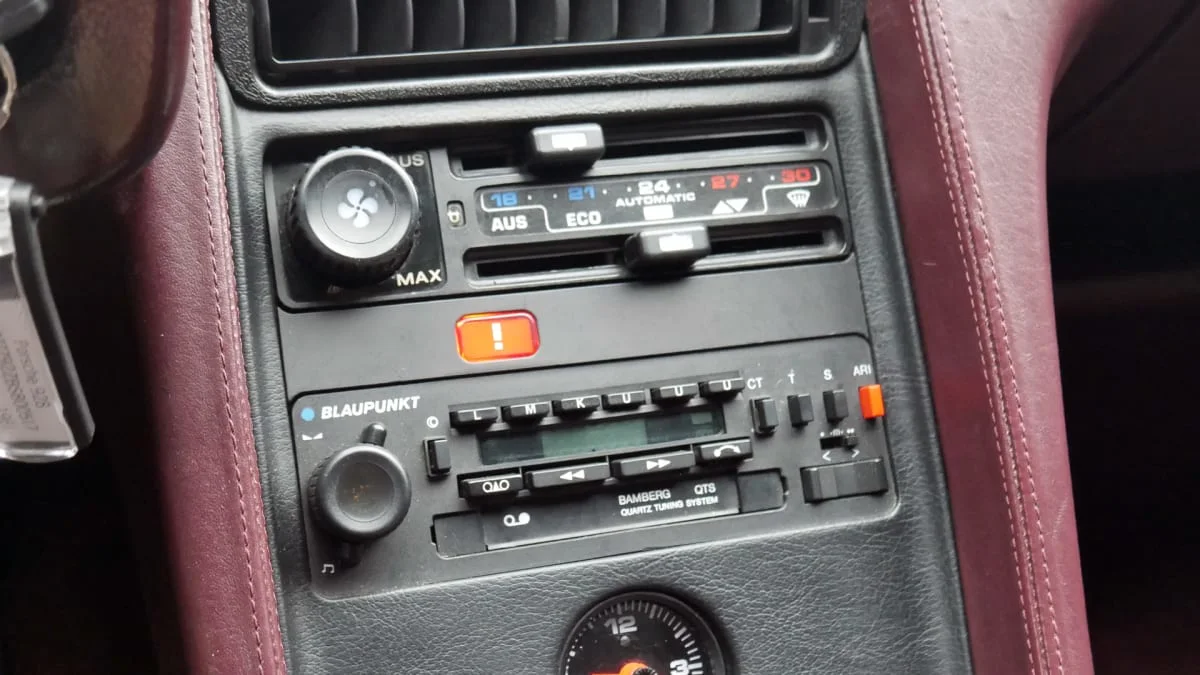
The labels on the Blaupunkt radio might as well be written in hieroglyphics. What looks like radio preset buttons that should be 1-6 are instead marked L-M-K-U-U-U. There are also CT, T and S buttons, plus a red one labeled ARI. Probably something to do with Arizona. Of course, I have no intention to put on the radio, but it’s indicative of the alien landscape I’ve just plopped myself into.
My head grazes the leather headliner, so I twist the recline wheel beyond my usual position. It’s a bit Fat Joe for my liking, but unlike the other cars I’d drive on this little adventure, at least the 928’s steering wheel actually adjusts. Tilt only, but the instrument pod comes along with it. So, no, the Infiniti G35 was not the first car to have this.
I drop the parking brake located in between the driver seat and door sill, and successfully remember where first gear is. You have to push through a detent to the left before getting down there, much as you do in gearboxes today that put reverse in the upper left (including those of modern Porsches). The clutch is surprisingly light and easy to modulate, but the gearing is odd. You stay in first much longer than you’d expect – it’s almost like a mix of first and second. That makes second feel more like third, something I’d come to find is typical for Porsches of this era. Finding second can be tricky, though, and its engagement isn’t always ensured. Sliding down from second to third is easy cheese despite the long throw of the short lever, but downshifting into third requires some concentration since the shifter doesn’t pop back to center by itself when you move it out of fourth. It wants to stay in line with fifth. I quickly get the hang of it and ultimately lose my own bet: I never put a gear wrong.
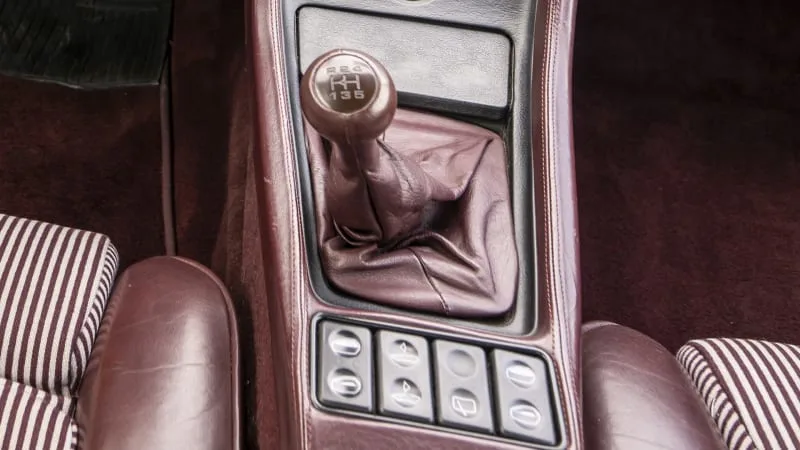
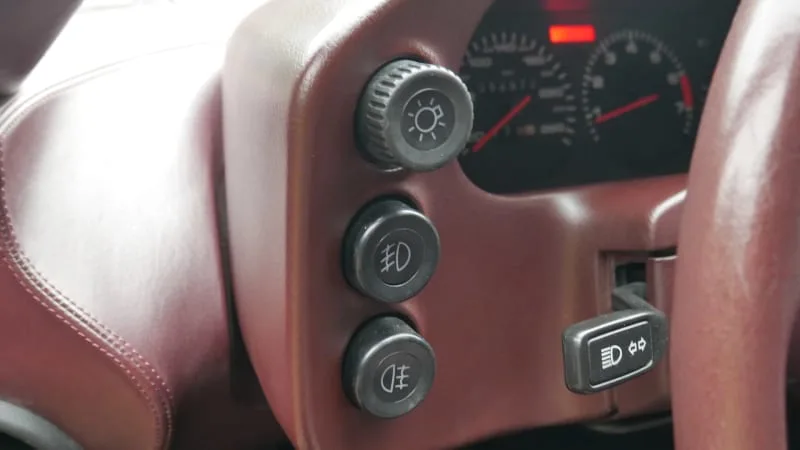
I am very warm, however. It’s chilly in Stuttgart and the heater was kindly turned on before I jumped in the car, but now I have no idea how to turn it off. I slide the temp slider far to the left, but now it’s blowing cold air at me. I try to turn the fan wheel as far to the left as possible, figuring “AUS” means “OFF” in German (it does), but that doesn’t really work. I’m basically left to choose between cold or hot air. I choose cold, point the vents away from me and focus on driving this rare Porsche on the Autobahn.
I approach a tunnel. Crap, I didn’t think to see where the lights were (I was too distracted by that Arizona button). There’s a big light bulb knob to the left of the instrument panel. OK, how does it work? Maybe pull it out like the light knob in my ’98 Z3 and other older cars? Nope, the knob comes completely out of the dash board. Oops. Back it luckily goes. Let’s try turning it! A long German word in the speedometer illuminates in green but the headlights don’t come on. Twist again? Ah ha! The little headlight orbs lift themselves forward out of the hood and suddenly remind me of one of the 928’s defining attributes.
(By the way, the 911 and 959 have a similar light knob … except you pull it to turn on the lights. Consistency was clearly a top priority at Porsche in the ’70s and ’80s)
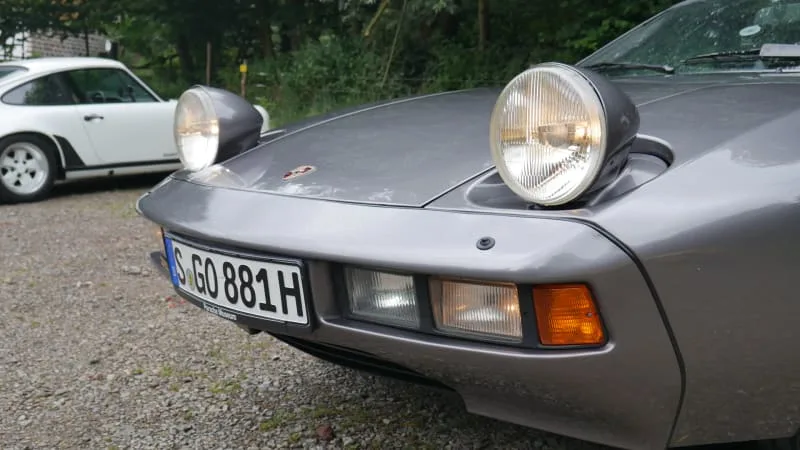
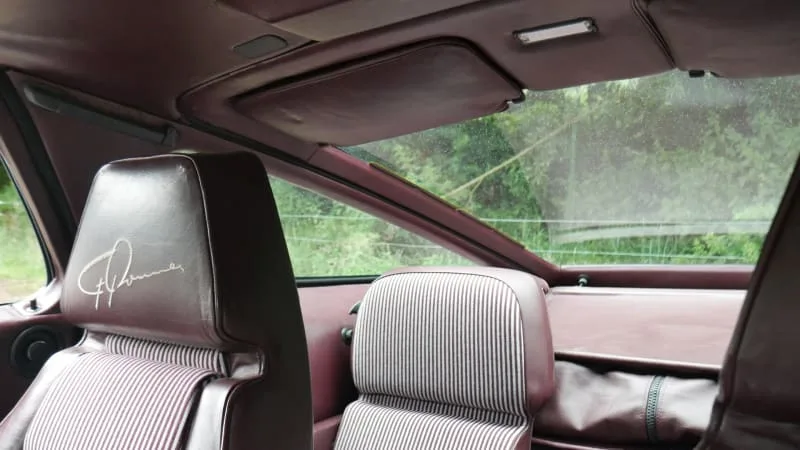
With the tunnel ahead now illuminated, I suddenly find myself needing to change lanes for an off-ramp ahead. I check the passenger mirror, which thankfully exists, but is quite frankly junk. Objects in mirror are farther than they appear. Thankfully, there’s an aquarium of glass over my shoulder, which eliminates any blind spot. The 2024 Spyder RS I drove the day before was a submarine by comparison.
Once off the Autobahn and onto a gently winding country road, I discover the steering to be slower on turn in than a modern car, which is generally normal for German cars and those with hydraulic steering. There’s decent feel, too, though I didn’t exactly push the car as drizzle began to fall. The brakes are reassuring with a solid, easily modulated pedal that’s mounted, like the clutch, much as you would expect. Commenting about this now will make sense after reading about my experiences with the other cars.
The 300-horsepower 4.6-liter V8 provides lovely low-end power and sharp throttle response, but doesn’t really sound like a V8 – it sounds more like a quintessential Porsche engine. Maybe not a flat-six 911 warbling away behind you, but it’s in the family. The 928 in general, however, feels more like long, lost cousin Oliver. Maybe it’s the grand touring format, the era, the design or all of the above. I very much like it, however. After all, my automotive tastes do run closer to the 928 than the 911. Then again, maybe that was about to change.
